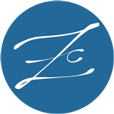The Art of diagnosis is in recognizing the disease by it’s cause, location, and symptoms. Although in Western medicine there are many diagnostic techniques in Chinese medicine there are only four: Looking, Listening, Asking and Taking the Pulses.
LOOKING
The first thing a high level practitioner of Chinese medicine does is to observe the patients spirit. The patient’s spirit is reflected in their facial expression, color of their face, and the brightness of their eyes. If the disease is not serious the patient will have a good complexion, strong voice and clear eyes. A dark face is an indication that the disease is serious. If the eyes are bright and clear it is an indication that the disease has not gone deep into the body.
The tongue is an important part the Chinese diagnosis; the doctor can detect imbalances in the heart, lungs, stomach, spleen, liver, gall bladder and kidneys. The doctor of Chinese medicine looks at the shape, coating and the body of the tongue. He or she can determine if the disease is superficial or deep within the body and much more read.
ASKING
“When questioning the patient about his or her condition, the practitioner inquires about: sensations of heat or cold, sweating, sensations in the head, urination and bowel movements, eating and drinking, sleep, pain in the chest upper and lower abdomen, thirst, medical history, causative factors of present illness, and the menstrual cycle, his or her own perceptions of the problem, especially with respect to areas of injury will allow the acupuncturist to develop a clear diagnosis, and more effective treatment plan.” — Dr. James So, Treatment of Disease with Chinese Medicine
LISTENING
Listening to the patient’s voice. A weak voice indicates that the patient’s body is weak. A loud voice indicates that the body is strong.
TAKING THE PULSE
Stuart takes the pulse and knows what is the root cause of the patient’s problem, and what must be done about it. I don’t ask the patient what problems they may have. I tell them what they are suffering from after taking their pulses. When the patient is in balance there is no illness.
Chinese pulse diagnosis is a lost art and to really learn Chinese pulse diagnosis one must study by the side a master. Stuart had the good fortune over 40 years ago to intern under a world-renowned master of Chinese medicine Dr. John F. Shen. He later went on to study with Dr. Jimmy Chang.


